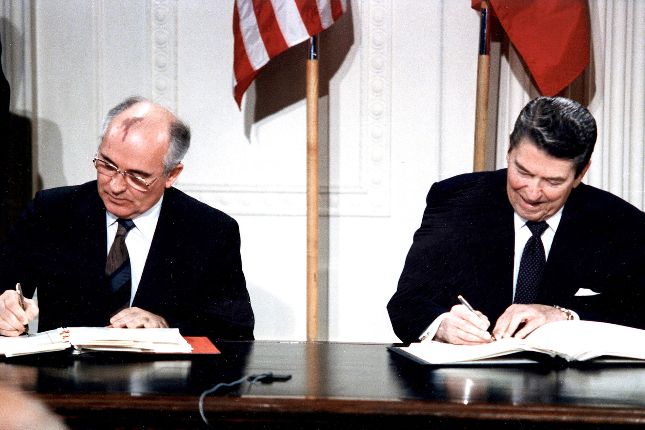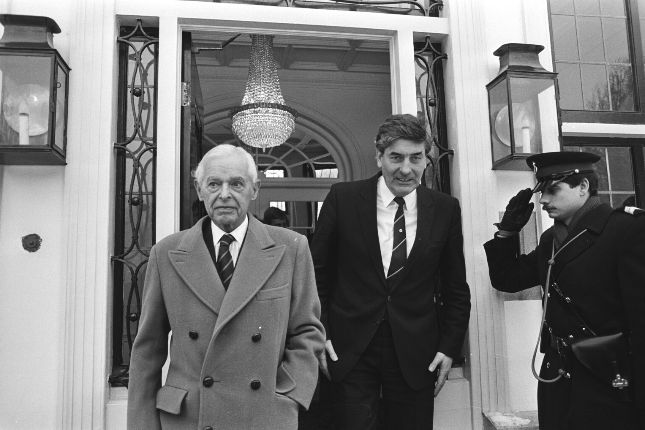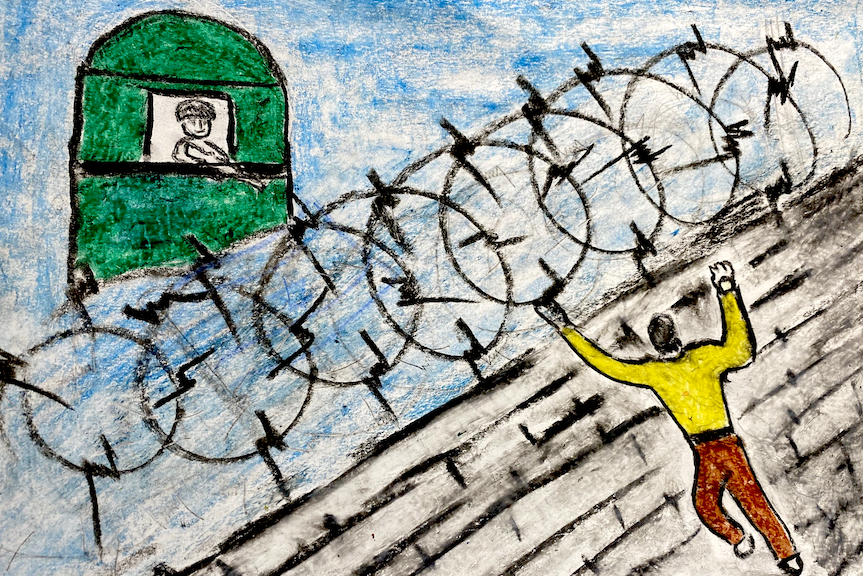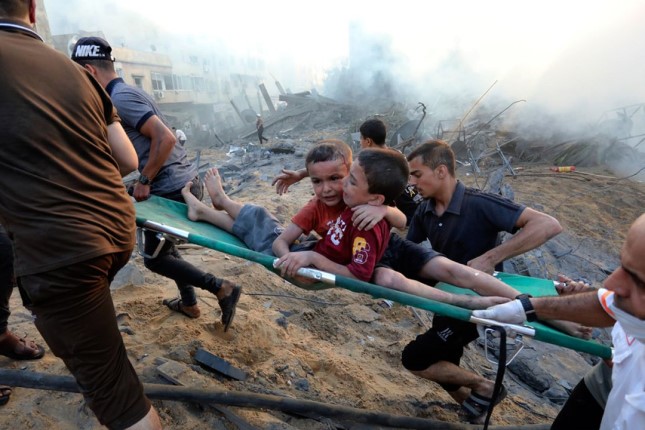Reflecting on my participation on July 1 in the Russian-hosted forum in Vienna on the ongoing transformation of the world order, I was struck by the words of Ambassador Alexander Lukashevich, the permanent representative of the Russian Federation to the Organization for Security and Co-operation in Europe (OSCE).
The ambassador told a very personal story when he took part in the Istanbul summit back in November 1999 as a junior diplomat in the delegation he now heads. There, despite tensions that existed between the United States/NATO and the Russian Federation over NATO’s then bombing of Serbia, OSCE leaders, through a process of dialogue, adopted three foundational documents that served as the framework for European security for the next two decades.
These were the Charter for European Security; the Agreement on Adaptation of the Treaty on Conventional Armed Forces in Europe; and the Istanbul Summit Declaration.
The Charter for European Security reaffirmed the commitment to a free, democratic and integrated Europe as defined by the geographic and political boundaries set forth by the territories encompassed by the OSCE, which coexisted in peace, with their respective individuals and communities enjoying freedom, prosperity and security.
The Agreement on Adaptation of the Treaty on Conventional Armed Forces in Europe (CFE) served to modify the existing CFE Treaty to consider the disintegration of the Soviet Union and the Warsaw Pact; the unification of Germany; and the expansion of NATO, all with the goal of facilitating equitable security and stability for all parties to the treaty.
Finally, the Istanbul Summit Declaration outlined the shared vision for European security and cooperation, emphasizing strengthening cooperation between the OSCE and other international organizations, enhancement of OSCE peacekeeping efforts, and expansion of OSCE-backed police activities designed to maintain the rule of law.
Ambassador Lukashevich lamented that the conflict in Ukraine, beginning with the 2014 Maidan coup that saw Ukrainian President Viktor Yanukovich ousted by U.S. and E.U.-backed Ukrainian nationalists, has undermined and destroyed all three of the Istanbul Summits crowning achievements.
INF

Helmeted protesters face off against police on Dynamivska Street during the Maidan uprising in Kiev, Jan 20, 2014. Photo: Mstyslav Chernov / Wikimedia Commons / CC BY-SA 3.0.
The OSCE, working at the behest of NATO, used the Minsk Accords to further the expansion of NATO, instead of brokering peace in Ukraine. Today, NATO is engaged in a war with Russia using Ukraine as its proxy. In short, the very processes of peace and security Lukashevich said he’d worked so hard to create and implement back in 1999 were “melting before my eyes.”
I had been involved in a process of foundational importance to European security — the implementation of the Intermediate Nuclear Forces (INF) Treaty. The INF Treaty was signed by President Ronald Reagan and the General Secretary of the Communist Party of the Soviet Union Mikhail Gorbachev on Dec. 8, 1987.
In February 1988 I was one of the first military officers assigned to the newly created On-Site Inspection Agency (OSIA), created by the U.S. Department of Defense to implement the INF Treaty.
In June 1988 I was dispatched to the Soviet Union as part of an advanced party of inspectors to install a multi-million-dollar monitoring installation outside the gates of a Soviet missile factory in the city of Votkinsk, some 750 miles east of Moscow in the foothills of the Ural Mountains.
For the next two years I worked in the company of my fellow American inspectors, side-by-side with our newfound Soviet colleagues, to implement a treaty which, without our mutual commitment to making the world a safer place through disarmament, would most likely have failed in the face of deep-seated opposition in both the U.S. and Soviet Union (you can read about my experiences in my book, Disarmament in the Time of Perestroika.)
Square One

Gorbachev and Reagan signing the INF Treaty in the White House in 1987. Photo: White House Photographic Office – National Archives and Records Administration / Wikimedia Commons / Public domain.
On June 28 last month, a mere three days before the Russian round table in Vienna, Russian President Vladimir Putin announced that Russia was going to resume production of short- and intermediate-range missiles — the very weapons myself and my fellow American and Soviet inspectors had worked so hard to eliminate. Putin said he would weigh their potential deployment in Europe and elsewhere to offset similar deployments by the United States of intermediate-range missiles in Europe and the Pacific.
Putin was referring to the deployment by the U.S. of Mk 70 containerized missile launchers capable of firing the SM-6 “Typhon” dual-capability missile as well as the Tomahawk ground-launched cruise missile. The SM-6 has a range of under 310 miles, making it compliant under the terms of the INF Treaty, the Tomahawk’s range of 1,800 miles makes it an INF-capable system.
The United States withdrew from the INF Treaty in 2019, during the presidency of Donald Trump. Russia, however, indicated that it would not either produce or deploy INF-capable missiles (despite being accused by the U.S. of doing just that in justifying its decision to withdraw from the landmark arms control agreement) so long as the U.S. did not introduce them into Europe.

U.S. Army Typhon medium-range capability missile system. Photo: US Army / Wikimedia Commons / Public domain.
In September 2023, the U.S. deployed two Mk 70 launchers onto the soil of Denmark as part of NATO military exercises. And in May of 2024 the U.S. likewise deployed the Mk 70 launcher on the soil of the Philippines. These actions prompted Putin’s response.
In short, we have literally gone back to square one when it comes to arms control and nuclear disarmament — to a time when Cold War politics nearly brought the U.S. and Russia to the edge of the nuclear abyss.
That is where we stand today.
Like Ambassador Lukashevich, I am literally watching my life’s work melt before my eyes.
The difference between now and then is stark. Four decades ago, we had an engaged public, and diplomats who talked to one another.
June 24 marked the 42nd anniversary of the million-person march in Central Park against nuclear war and for nuclear disarmament.
The political pressure created by this event resonated into the halls of power.
"Walk in the Woods"

Nitze, left, visiting The Hague in January 1985 while serving as U.S. arms control adviser. Photo: Rob Croes / Anefo / CC0 / Wikimedia Commons.
July 16 will mark the 42nd anniversary of the famous “Walk in the Woods” conducted by Paul Nitze and Yuli Kvitsinsky, respectively the U.S. and Soviet lead negotiators for INF talks that, at the time, were stymied.
Faced with a calcified recalcitrance on the part of U.S. hardliners, the two men took a walk in the woods outside Geneva, Switzerland, where they outlined possible ways to break the negotiation impasse.
The ideas that Nitze and Kvitsinsky came up with never came to pass — neither the U.S. nor the Soviet Union were ready to undertake such drastic actions.
But their courageous stab at diplomacy at a time when neither side was talking to the other shook free the rust that had frozen their respective sides, lubricating the machinery of diplomacy, and set in motion the processes that led to Reagan and Gorbachev signing the INF Treaty some five and a half years later.
The key take-away from the Nitze-Kvitsinsky “Walk in the Woods” was that, when it comes to meaningful arms control, success is not immediate. The process of arms control must be seen in the long term.
It was also clear that fear fueled consideration of positive outcomes that eventually led to an equitable solution in the form of the INF Treaty.
There is no doubt in my mind that within the ranks of the Russian and U.S. diplomatic corps today are two men possessed of the vision and courage of Paul Nitze and Yuli Kvitsinsky who can, if given the opportunity, recreate the magic of the “Walk in the Woods.” That magic helped create the conditions for negotiations that helped pull the U.S. and Soviet Union from the nuclear abyss more than four decades ago.
But two hurdles must be crossed first. It is difficult to imagine a U.S. and Russian diplomat walking and talking today when, as Professor Sergey Markedonev, a fellow participant at the Vienna round table pointed out, official U.S. policy precludes even shaking hands with Russian diplomats.
It’s Up to the American People
To cross that bridge the U.S. government needs a signal from the American people that such behavior is not acceptable.
We need a modern-day version of the June 1982 Central Park million-person rally in support of nuclear disarmament and arms control and against nuclear war.
America has an election coming up in November where issues of our collective existential survival as a people and nation are on the line.
There is no more existential issue than that of nuclear war.
As was the case in June 1982, we, the people of the United States, need to send a collective signal to all who seek to represent us in the highest office of the land, that we will not tolerate policies that lead toward nuclear war.
That we insist on policies that promote nuclear disarmament and arms control.
That we demand that our diplomats begin talking with their Russian counterparts.
I’m tired of watching my life’s work melt before my very eyes.
It’s time to rebuild the foundations of our collective survival.
To make mainstream the cause of disarmament that once saved us from nuclear Armageddon.
Main photo: Oct. 18, 1988: Roland LaJoie, director of the U.S. On-Site Inspection Agency, leads a delegation of Soviet inspectors who had come to the Davis-Monthan Air Force Base in Arizona to monitor the destruction of ground-launched cruise missile weapon systems in the first round of reductions mandated by the Intermediate Range Nuclear Forces Treaty © U.S. National Archives / Public domain.
Source: Consortium News.






























